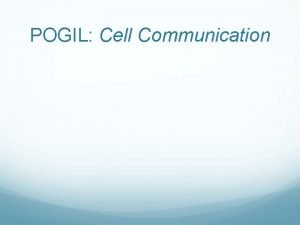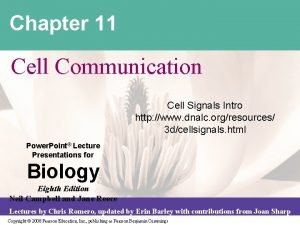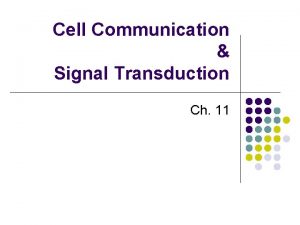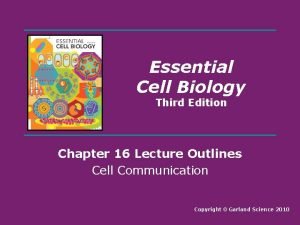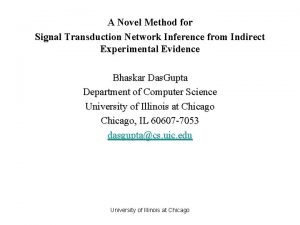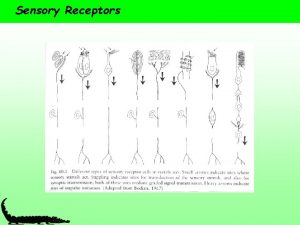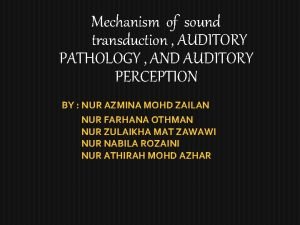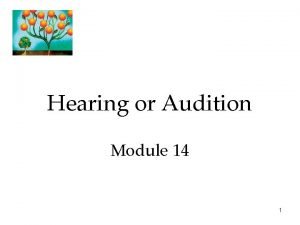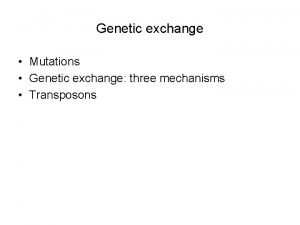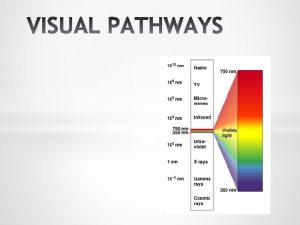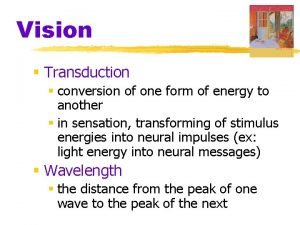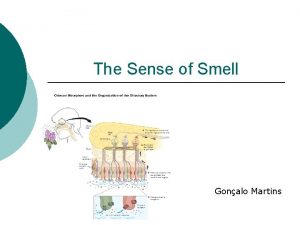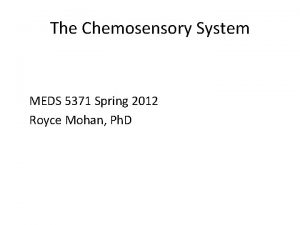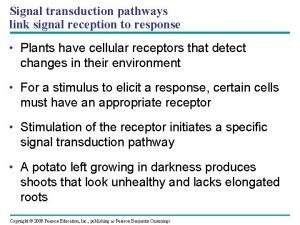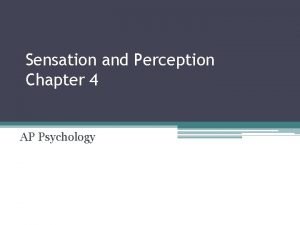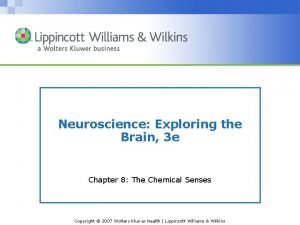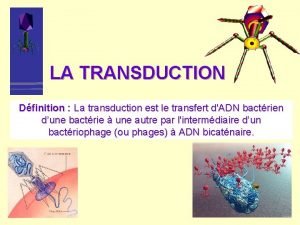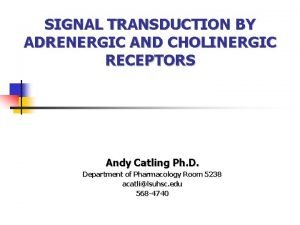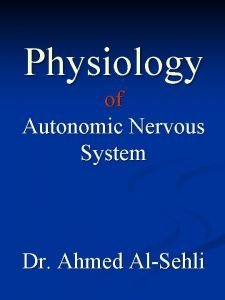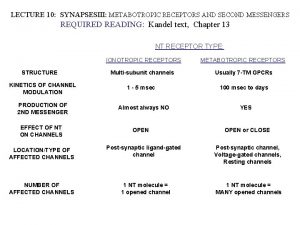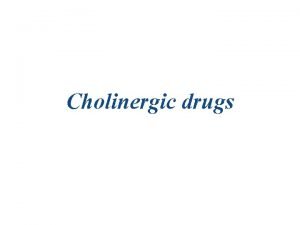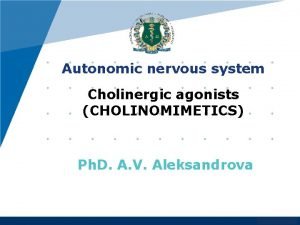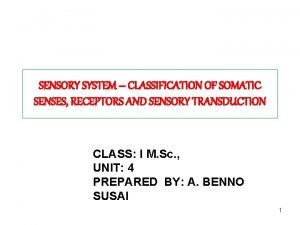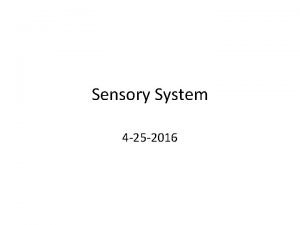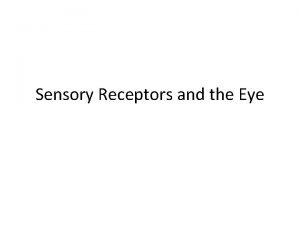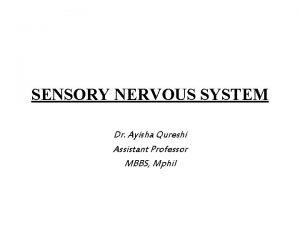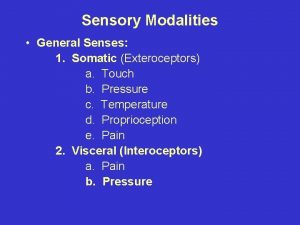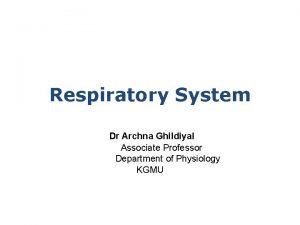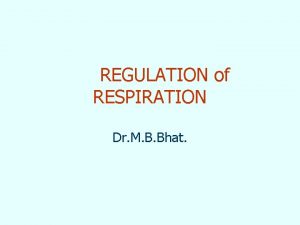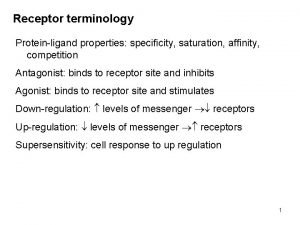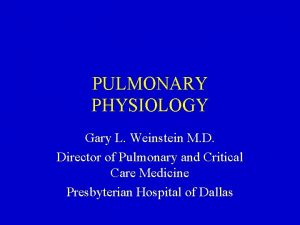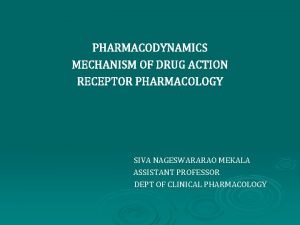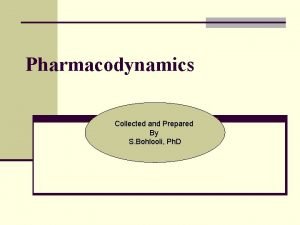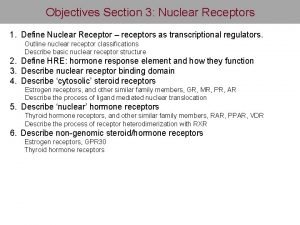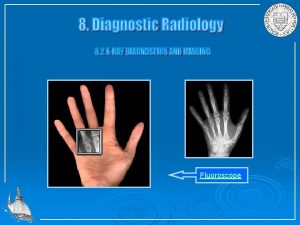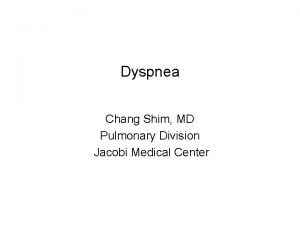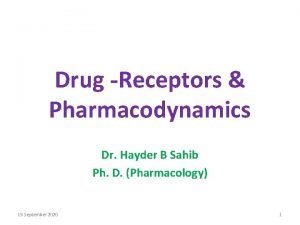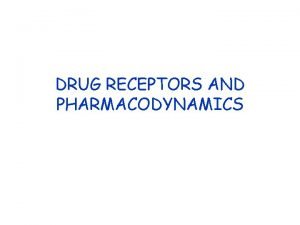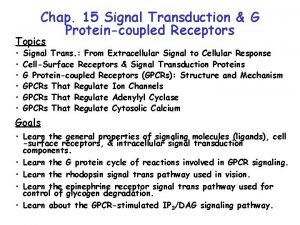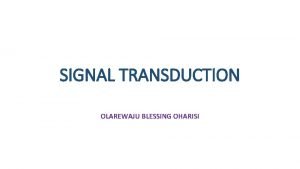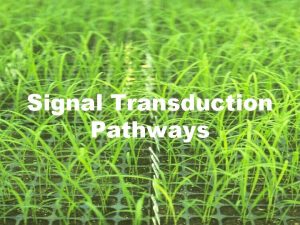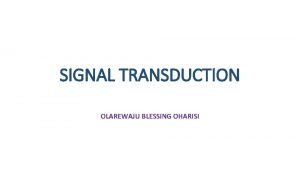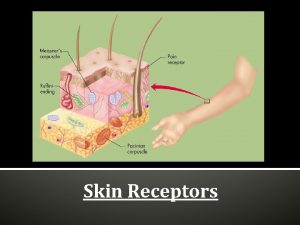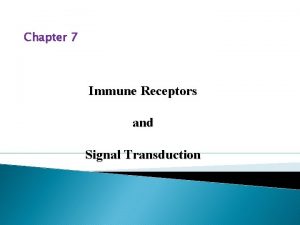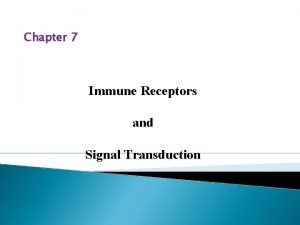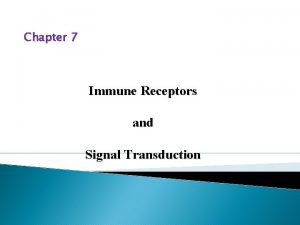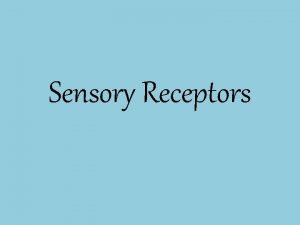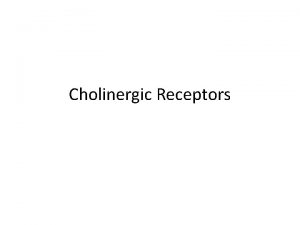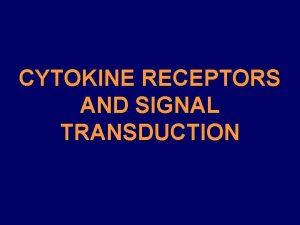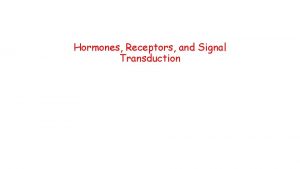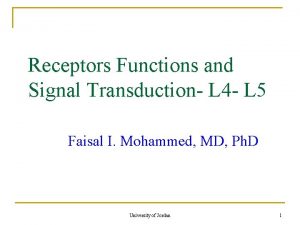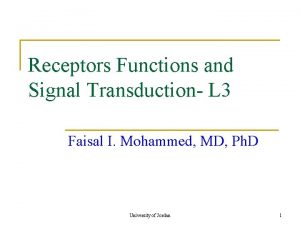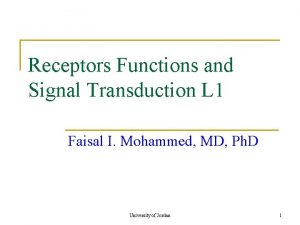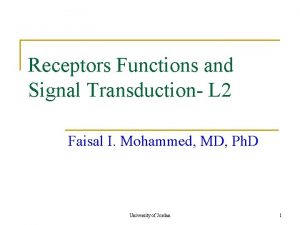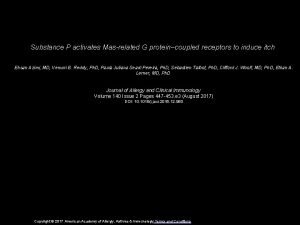Chapter 15 Signal Transduction and G ProteinCoupled Receptors


















































- Slides: 50

Chapter 15 – Signal Transduction and G Protein–Coupled Receptors

Chapter 15 – Signal Transduction and G Protein–Coupled Receptors 15. 1 Signal Transduction: From Extracellular Signal to Cellular Response 15. 2 Studying Cell-Surface Receptors and Signal Transduction Proteins 15. 3 G Protein–Coupled Receptors: Structure and Mechanism 15. 4 G Protein–Coupled Receptors That Regulate Ion Channels 15. 5 G Protein–Coupled Receptors That Activate or Inhibit Adenylyl Cyclase 15. 6 G Protein–Coupled Receptors That Trigger Elevations in Cytosolic and Mitochondrial Calcium

Signal Transduction and G Protein–Coupled Receptors 15. 1 Signal Transduction: From Extracellular Signal to Cellular Response • All cells respond to extracellular signals/stimuli that activate plasma membrane or cytosolic receptors. • Activated receptors function as transcription factors or activate G protein switches that regulate a variety of downstream pathways or induce generation of intracellular second messengers that do so. • Protein phosphorylation by kinases and dephosphorylation by phosphatases regulate protein activity in the cellular pathways and can amplify intracellular signaling.








Signal Transduction and G Protein–Coupled Receptors 15. 2 Studying Cell-Surface Receptors and Signal Transduction Proteins • Near-maximal response of a cell to a particular ligand generally occurs at ligand concentrations at which less than 100 percent of its receptors are bound to the ligand. • Signal receptors and pathways are targeted by numerous drugs. • Receptors and signaling pathway intermediates are studied with a variety of experimental approaches including affinity chromatography, Western blotting, immunoprecipitation, and pull-down assays.





Signal Transduction and G Protein–Coupled Receptors 15. 3 G Protein–Coupled Receptors: Structure and Mechanism • The large diverse family of G protein-coupled receptors (GPCRs) respond to a variety of extracellular signals and activate trimeric G proteins. • G proteins function as On-Off switches for intracellular signaling pathways by activating or inactivating ion channels or effector enzymes that generate second messenger molecules. • GPCR signaling pathways regulate a wide range of cellular activities from metabolism to gene expression.








Signal Transduction and G Protein–Coupled Receptors 15. 4 G Protein–Coupled Receptors That Regulate Ion Channels • The cardiac muscarinic acetylcholine GPCR regulates a K+ channel. • Light stimulation of the photosensitive rhodopsin GPCR closes c. GMP-gated Na+/Ca 2+ channels by regulating a c. GMP pathway in retinal cells. • Several mechanisms act to terminate visual signaling. • Adaptation to a wide range of ambient light levels is mediated by movements of the G protein transducin and the inhibitor protein arrestin into and out of the rod-cell outer segment.







Signal Transduction and G Protein–Coupled Receptors 15. 5 G Protein–Coupled Receptors That Activate or Inhibit Adenylyl Cyclase • GPCRs activate G proteins that activate or inhibit adenylyl cyclase generation of c. AMP from ATP and are regulated by feedback repression. • c. AMP activates protein kinase A (PKA), which phosphorylates-regulates multiple target proteins including enzymes in cells. • Epinephrine activation of its GPCR in liver and muscle cells stimulates glycogen breakdown into glucose by inhibiting glycogen synthesis and stimulating glycogen breakdown via a kinase cascade. • PKA activation can stimulate gene expression.












Signal Transduction and G Protein–Coupled Receptors 15. 6 G Protein–Coupled Receptors That Trigger Elevations in Cytosolic and Mitochondrial Calcium • GPCR-G protein activation of phospholipase C generates IP 3 (soluble ) and DAG (membrane bound) second messengers from PIP 2. • IP 3 triggers the opening of IP 3 -gated Ca 2+ channels in the endoplasmic reticulum and elevation of cytosolic free Ca 2+, which activates PKC and calmodulin. • Neural and hormonal stimulation coordinately regulate glycogen breakdown through Ca 2+ and c. AMP. • Acetylcholine activation of its GPCR on endothelial cells induces generation of the NO gaseous signal, which stimulates smooth muscle relaxation and vasodilation.







 Pogil cellular communication
Pogil cellular communication 3 stages of cell communication
3 stages of cell communication Cell signal transduction
Cell signal transduction Essential cell biology chapter 3 quiz
Essential cell biology chapter 3 quiz Signal transduction
Signal transduction Signal transduction
Signal transduction Baseband signal and bandpass signal
Baseband signal and bandpass signal Baseband signal and bandpass signal
Baseband signal and bandpass signal Even odd signals
Even odd signals Photoreceptor transduction
Photoreceptor transduction Transduction of hearing
Transduction of hearing Transduction in the ear
Transduction in the ear Where does transduction occur in the ear
Where does transduction occur in the ear Transduction in the ear
Transduction in the ear Generalized transduction
Generalized transduction Diencephalon
Diencephalon Transduction psychology
Transduction psychology Transduction psychology
Transduction psychology Olfactory transduction
Olfactory transduction Olfactory transduction
Olfactory transduction Olfactory transduction
Olfactory transduction Reception transduction response
Reception transduction response How do subliminals work
How do subliminals work Olfactory transduction
Olfactory transduction Transduction def
Transduction def Digital signal as a composite analog signal
Digital signal as a composite analog signal Difference between alpha and beta receptors
Difference between alpha and beta receptors Vagal escape
Vagal escape Difference between ionotropic and metabotropic receptors
Difference between ionotropic and metabotropic receptors Cholinergic adrenergic receptors
Cholinergic adrenergic receptors Muscarinic vs nicotinic effects
Muscarinic vs nicotinic effects Tuberous receptors
Tuberous receptors Olfactory receptor
Olfactory receptor Classification of somatic senses
Classification of somatic senses Umami taste receptors on tongue
Umami taste receptors on tongue Classification of sensory receptors
Classification of sensory receptors Eye sensory receptors
Eye sensory receptors Tonic receptors
Tonic receptors Classification of sensory receptors
Classification of sensory receptors 3 types of lung receptors
3 types of lung receptors J receptors
J receptors Derine
Derine Gary weinstein md
Gary weinstein md Receptors in pharmacology
Receptors in pharmacology Iontropic
Iontropic T3 receptor
T3 receptor Basic principles of pharmacology
Basic principles of pharmacology The image receptor in xeroradiography is
The image receptor in xeroradiography is J receptors
J receptors Spare receptors
Spare receptors Graded dose response curve
Graded dose response curve
